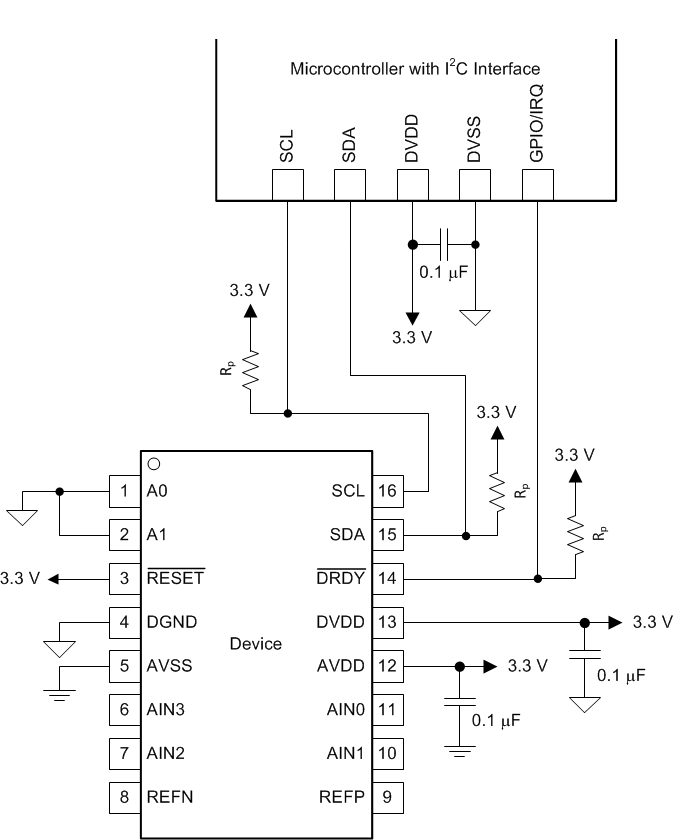JAJSF20B October 2017 – October 2018 ADS122C04
PRODUCTION DATA.
- 1 特長
- 2 アプリケーション
- 3 概要
- 4 改訂履歴
- 5 概要(続き)
- 6 Pin Configuration and Functions
- 7 Specifications
- 8 Parameter Measurement Information
-
9 Detailed Description
- 9.1 Overview
- 9.2 Functional Block Diagram
- 9.3
Feature Description
- 9.3.1 Multiplexer
- 9.3.2 Low-Noise Programmable Gain Stage
- 9.3.3 Voltage Reference
- 9.3.4 Modulator and Internal Oscillator
- 9.3.5 Digital Filter
- 9.3.6 Conversion Times
- 9.3.7 Excitation Current Sources
- 9.3.8 Sensor Detection
- 9.3.9 System Monitor
- 9.3.10 Temperature Sensor
- 9.3.11 Offset Calibration
- 9.3.12 Conversion Data Counter
- 9.3.13 Data Integrity Features
- 9.4 Device Functional Modes
- 9.5 Programming
- 9.6
Register Map
- 9.6.1 Configuration Registers
- 9.6.2 Register Descriptions
- 10Application and Implementation
- 11Power Supply Recommendations
- 12Layout
- 13デバイスおよびドキュメントのサポート
- 14メカニカル、パッケージ、および注文情報
パッケージ・オプション
メカニカル・データ(パッケージ|ピン)
サーマルパッド・メカニカル・データ
- RTE|16
発注情報
10.1.1 Interface Connections
Figure 68 shows the principle interface connections for the ADS122C04.
 Figure 68. Interface Connections
Figure 68. Interface Connections The ADS122C04 interfaces directly to standard-mode, fast-mode, or fast-mode plus I2C controllers. Any microcontroller I2C peripheral, including master-only and single-master I2C peripherals, operates with the ADS122C04. Details of the I2C communication protocol of the device can be found in the Programming section. The ADS122C04 does not perform clock-stretching (that is, the device never pulls the clock line low), so this function does not need to be provided for unless other clock-stretching devices are present on the same I2C bus.
Pullup resistors are required on both the SDA and SCL lines, as well as on the open-drain DRDY output. The size of these resistors depends on the bus operating speed and capacitance of the bus lines. Higher-value resistors yield lower power consumption when the bus lines are pulled low, but increase the transition times on the bus, which limits the bus speed. Lower-value resistors allow higher interface speeds, but at the expense of higher power consumption when the bus lines are pulled low. Long bus lines have higher capacitance and require smaller pullup resistors to compensate. Do not use resistors that are too small because the bus drivers may be unable to pull the bus lines low. See the I2C-Bus Specification and User Manual for details on pullup resistor sizing.